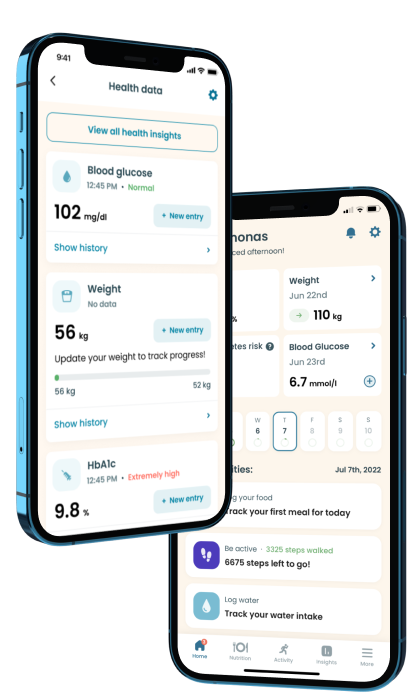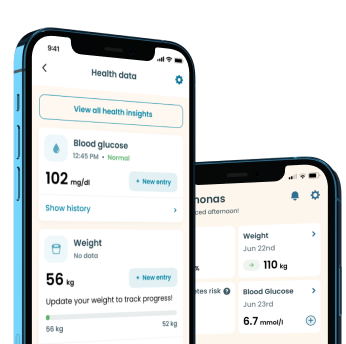Bread and Diabetes

Not good
71
252 kcal
Carbohydrate-rich foods are known to cause an increase in blood sugar levels. Since bread is high in carbs, there's a lot of debate about its safety in diabetes.
Overall, watching your carbs intake doesn't mean you should eliminate bread—especially brown bread— from your diet. This article shows the connection between brown bread and diabetes and answers questions regarding its safety for people with diabetes.
Nutritional value
- Protein 12 g
- Carbohydrate 43 g
- Fat 3.5 g
- Fiber 6 g
- Sugar 4.3 g
- Cholesterol 0 g
Nutrient Value of Brown/Whole-Wheat Bread
Brown bread is similar to whole wheat bread — the former is simply a mix of whole-wheat flour and white flour but with certain colorants like caramel.
According to the USDA, one slice (31 g) of whole wheat bread contains 14 g of carbs, 2.02 g of fiber, and 3 g of protein. Despite its relatively high carb content, it offers just 80 calories per slice. This means you’re less likely to gain excessive weight when you eat them with discretion.
On the contrary, whole wheat bread has a pretty high glycemic index (GI) value of 74. This is a source of concern for diabetics as it has a high chance of raising their blood sugar levels immediately after consumption.
Take a quiz
Discover what Klinio app can do for you
Healthy diabetes meal plan crafted just for YOU

Personalized workouts with no equipment needed

Track your progress with smart tracking tools

Benefits of Brown/Whole-Wheat Bread to a Diabetic
While white bread is touted to be a not-so-good meal for diabetics, whole-wheat bread proves otherwise, as observed below.
Reduces the Risk of Heart Disease
Whole grains bread can lower the risk of heart disease, the leading cause of death worldwide, and a significant risk for people with diabetes. According to a systematic review and meta-analysis of 45 studies, consuming 90 g of whole grains daily results in a 22% decrease in cardiovascular disease risk and a 19% decrease in coronary heart disease risk.
Similarly, a ten-year study of 17,424 adults found that those who consumed the most whole grains as a percentage of total carbs had a 47% lower risk of heart disease. Hence, whole grain bread should be included in heart-healthy diets.
High in Protein
Including adequate protein in your diet can help control your hunger and help you gain muscle mass. Overall, while bread does not have as much protein as other foods like eggs, it is a low-fat or fat-free alternative to achieve your daily protein requirements.
Protein has an RDA of 0.8 g/kg of body weight. This means a 75kg individual needs 60 g of protein daily. Just one slice of whole wheat bread offers 5% of this value.
Controls Blood Sugar
Whole-wheat bread is high in fiber (5.32—8.08% DV), and including high-fiber foods in your diet is an excellent strategy to keep your blood sugar in check.
When fiber is absorbed, your body reacts differently than when refined carbs, like white flour, are digested. A small amount of fiber passes through your digestive system undamaged. Because of this difference, diets high in fiber are less likely to trigger a blood sugar surge.
Helps With Weight Loss
Fiber saves the day once again by aiding your weight loss goals. Namely, following the intake of fiber-rich foods like whole-wheat bread, you tend to feel fuller, prompting you to eat less. This promotes weight loss by inducing a calorie deficit.
An analysis of 15 research involving nearly 120,000 participants found that consuming three servings of whole grains per day was connected to a lower BMI and less belly fat.
Longer Lasting Fuel
Complex carbohydrates are abundant in whole grains and legumes. As such, bread made from either of these sources provides a large quantity of immediately available energy, resulting in a continuous flow of glucose into the bloodstream. Since fatigue is a common symptom of diabetes, the complex carbs present in bread can help.
Should a Diabetic Eat Bread?
Yes. People with diabetes can eat the appropriate varieties of bread but in minimal amounts. Although bread is relatively high in carbs, it all comes down to making the right choices and adequately balancing your diet.
Rather than eating white bread, it’s better to stick to the American Diabetes Association’s recommendation of whole-grain or 100% whole-wheat bread.
This is because white bread is composed of thoroughly processed white flour and added sugar. On the other hand, whole grain bread is the better option for diabetics due to its high fiber content, particularly insoluble fiber — a complex carb that, unlike other carbs, cannot be processed by the body.
Choosing The Right Bread For You
No two loaves are made the same; hence, be sure to read the nutritional information carefully. Here are some tips to help you choose the proper bread:
- Choose bread with a high dietary fiber content of about 2–3 g per slice
- Choose a low-glycemic index (GI) bread
- Pick a whole grain loaf of bread
Summary
Whole-wheat bread like brown bread and diabetes go hand in hand if eaten in minimal quantities. They present various features and benefits that make them ideal for a diabetic, ranging from a decent fiber content to a reduced heart disease risk, among others. Still, consulting your health practitioner for additional advice is not out of place.

Download Klinio app!
Get more by downloading our free Klinio App. Analyze your health, form new habits and manage your diabetes anytime, anywhere.
OR
SCAN QR CODE



GET THE APP











